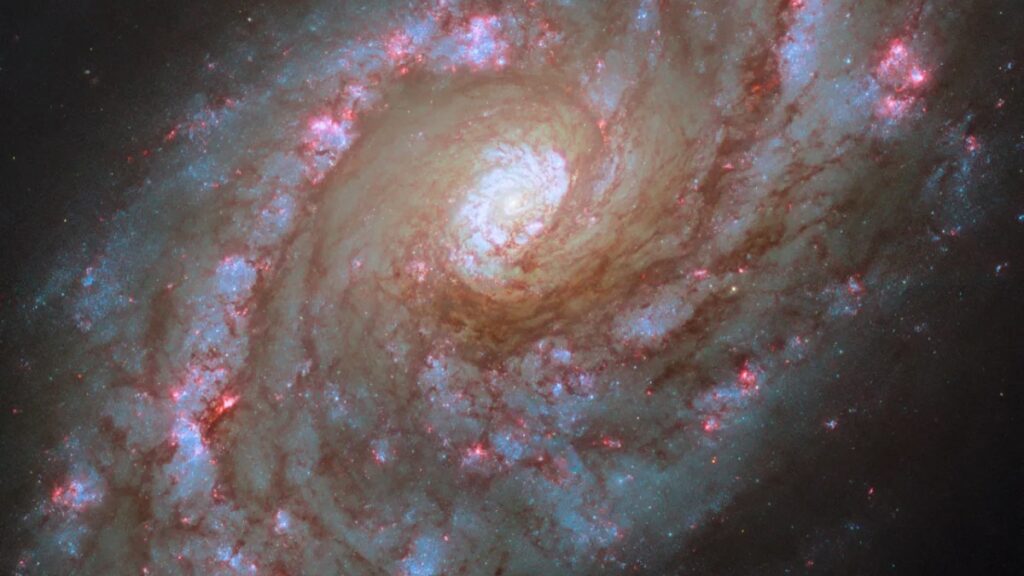The Hubble Space Telescope captured a stunning image of the spiral galaxy NGC 5248, located approximately 42 million light-years from Earth in the constellation Boötes. Also called Caldwell 45, NGC 5248 is known for its striking spiral structure and vibrant starburst regions, making it a favorite among astronomers.
The Hubble Space Telescope photographed a spiral galaxy
In the image, NGC 5248 shows its two prominent spiral arms extending outward from the bright central region, almost reaching the corners of the frame. Dark reddish streaks of dust sweep through these arms, blocking some light and highlighting the galaxy’s intricate structure. Bright pink dots scattered throughout the surface mark areas where new stars are actively forming, giving the galaxy a dynamic appearance.
This galaxy is classified as a ‘grand design’ spiral, characterized by its well-defined arms and subtle striations in its core, which are not fully visible in the Hubble portrait. These features play a key role in the evolution of the galaxy, affecting how matter moves through it over time. Dynamic gas flows from the outer regions of the galaxy enter the central star-forming regions and potentially toward the central black hole, facilitating the formation of an active galactic nucleus.
NGC 5248 is particularly noteworthy because of the numerous bright starburst regions scattered throughout its disk dominated by a population of young stars. Among them are two active ring-shaped starburst regions surrounding the core, filled with young star clusters. The presence of a second nuclear ring within the first indicates the intense flows of matter and energy operating within this galaxy.
Because of its proximity and visibility to the starburst region, NGC 5248 serves as an excellent target for both professional and amateur astronomers. The Hubble Space Telescope continues to provide invaluable insights into the structure and evolution of galaxies like NGC 5248, further improving our understanding of the cosmos.


